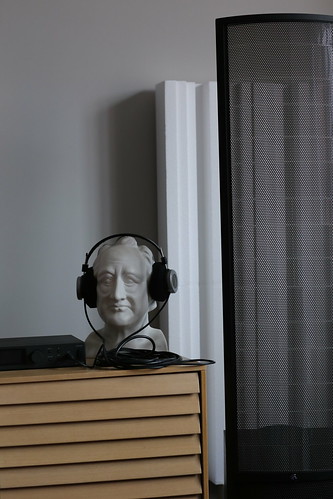Starting a separate thread on a narrower topic than the other ESL 63 thread running at the moment, to avoid confusion.
I have been using the 63's for a while now and am very happy with them but I continue to ponder various improvements. I have set aside thoughts of super tweeters but have started to wonder about the various acoustic panels that you can buy from Auraflex and GIK. (I have tried Auraflex foam stands under my sub woofers and have been very pleased with the results.)
in particular I wonder whether putting some of these panels close behind the 63s might cancel some of the rear reflections. If so would that be beneficial (or might it lose something valuable)? Also I do not properly understand the difference between absorption/diffusion/scattering and whether these effects in fact overlap and apply to different frequencies. I would say that I like the overall balance of the sound I have now though I am wondering whether the backward firing output is creating cancelling effects that are slightly spoiling the forward output.
Has anyone experimented along these lines with Electrostatics who can offer first hand experience of results/benefits?
[Background - My 63s are on GFD strands firing long ways down the room with their outside edges close to the side walls. They are roughly 2 metres from the back wall (though there are bits of shelving and furniture behind them). I already have bookshelves and racks down each side of the room which I understand might help to break up reflection points etc. I use Gradient subs below 110hz on aura flex stands with the 63s.]
I have been using the 63's for a while now and am very happy with them but I continue to ponder various improvements. I have set aside thoughts of super tweeters but have started to wonder about the various acoustic panels that you can buy from Auraflex and GIK. (I have tried Auraflex foam stands under my sub woofers and have been very pleased with the results.)
in particular I wonder whether putting some of these panels close behind the 63s might cancel some of the rear reflections. If so would that be beneficial (or might it lose something valuable)? Also I do not properly understand the difference between absorption/diffusion/scattering and whether these effects in fact overlap and apply to different frequencies. I would say that I like the overall balance of the sound I have now though I am wondering whether the backward firing output is creating cancelling effects that are slightly spoiling the forward output.
Has anyone experimented along these lines with Electrostatics who can offer first hand experience of results/benefits?
[Background - My 63s are on GFD strands firing long ways down the room with their outside edges close to the side walls. They are roughly 2 metres from the back wall (though there are bits of shelving and furniture behind them). I already have bookshelves and racks down each side of the room which I understand might help to break up reflection points etc. I use Gradient subs below 110hz on aura flex stands with the 63s.]


